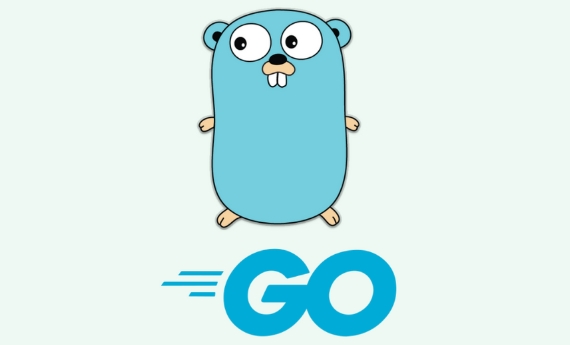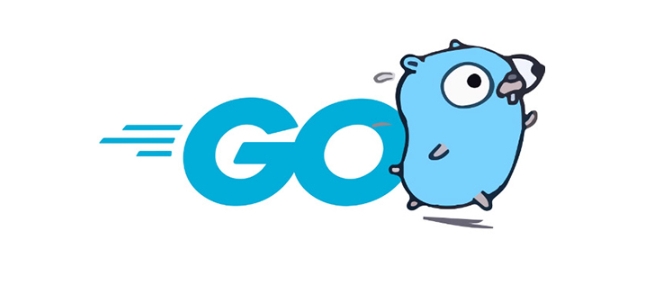Go Modules is an official dependency management tool introduced by Go 1.11, suitable for new and old projects. 1. Initialize the module to generate a go.mod file by specifying the module path. 2. Add dependencies to automatically download or manually specify the version number. 3. FAQ: Use the proxy to set GOPROXY to resolve the download failure and use go get to change the version. 4. Use go list and go mod graph to view dependencies, and use go mod tidy to organize dependencies. 5. Replace local test with replace with local path. After mastering these steps, the use of Go Modules is clear and convenient.

It is actually not that difficult to manage dependencies with Go Modules. If you have just started learning, or have been using GOPATH mode before, this article is just right for you. Go Modules is an official dependency management solution introduced since Go 1.11 and is now a mainstream practice.

Initialize a module
The first step is to create a new module. Go to your project directory and execute in the terminal:
go mod init example.com/mymodule
Here example.com/mymodule is your module path, usually the address of your code repository. After execution, a go.mod file will be generated, which will record your dependency information.

If you add module support in old projects, the same command will be given. Just make sure that the current directory is not in GOPATH, otherwise an error will be reported.
Tips: If you develop locally, you can use the placeholder path such as
example.com/yourprojectname, and you don’t need to really register a domain name.
Add dependency package
When you reference an external package in your code, for example:
import "github.com/gin-gonic/gin"
Then run go build or go run , Go will automatically download the package and write it into the go.mod file. At the same time, a go.sum file will be generated to record the hash value of dependencies to ensure consistency.
If you don't want to wait for automatic downloads, you can also add them manually:
go get github.com/gin-gonic/gin@v1.9.0
This allows you to specify the version number and avoid the instability caused by pulling the latest version.
FAQ:
- Download failed? It may be a network problem, you can set up a proxy:
GOPROXY=https://goproxy.io,direct - Want to change the version? Just
go get xxx@新版本號
View and organize dependencies
You can use the following commands to view the dependency of the current project:
-
go list -m all: list all direct and indirect dependencies -
go mod graph: Show the complete dependency graph -
go mod tidy: clean up unused dependencies, or complete missing dependencies
Sometimes you will find that there are many useless entries in go.mod , or some indirect dependencies are missing. Running go mod tidy can help you organize it.
Note: tidy will modify your go.mod and go.sum files. It is recommended to submit git first before operating.
Local test dependency package
If you have written another module yourself and want to use it in the current project, but don’t want to send it to the public network repository, you can use replace function.
For example, if you have a local tool library placed in /home/user/mylib , you can add it to go.mod :
replace example.com/mylib => ../mylib
Or directly replace it with the local path:
replace example.com/mylib v1.0.0 => /home/user/mylib
In this way, you won’t download it online, just use your local code. Ideal for internal component development or debugging.
Basically that's it. Go Modules looks a bit complicated in the early stage, but after using it a few times, you will find that the process is clear and much more convenient than the previous vendor solution.
The above is the detailed content of Go modules tutorial. For more information, please follow other related articles on the PHP Chinese website!

Hot AI Tools

Undress AI Tool
Undress images for free

Undresser.AI Undress
AI-powered app for creating realistic nude photos

AI Clothes Remover
Online AI tool for removing clothes from photos.

Clothoff.io
AI clothes remover

Video Face Swap
Swap faces in any video effortlessly with our completely free AI face swap tool!

Hot Article

Hot Tools

Notepad++7.3.1
Easy-to-use and free code editor

SublimeText3 Chinese version
Chinese version, very easy to use

Zend Studio 13.0.1
Powerful PHP integrated development environment

Dreamweaver CS6
Visual web development tools

SublimeText3 Mac version
God-level code editing software (SublimeText3)

Hot Topics
 What are the implications of Go's static linking by default?
Jun 19, 2025 am 01:08 AM
What are the implications of Go's static linking by default?
Jun 19, 2025 am 01:08 AM
Go compiles the program into a standalone binary by default, the main reason is static linking. 1. Simpler deployment: no additional installation of dependency libraries, can be run directly across Linux distributions; 2. Larger binary size: Including all dependencies causes file size to increase, but can be optimized through building flags or compression tools; 3. Higher predictability and security: avoid risks brought about by changes in external library versions and enhance stability; 4. Limited operation flexibility: cannot hot update of shared libraries, and recompile and deployment are required to fix dependency vulnerabilities. These features make Go suitable for CLI tools, microservices and other scenarios, but trade-offs are needed in environments where storage is restricted or relies on centralized management.
 How do I create a buffered channel in Go? (e.g., make(chan int, 10))
Jun 20, 2025 am 01:07 AM
How do I create a buffered channel in Go? (e.g., make(chan int, 10))
Jun 20, 2025 am 01:07 AM
To create a buffer channel in Go, just specify the capacity parameters in the make function. The buffer channel allows the sending operation to temporarily store data when there is no receiver, as long as the specified capacity is not exceeded. For example, ch:=make(chanint,10) creates a buffer channel that can store up to 10 integer values; unlike unbuffered channels, data will not be blocked immediately when sending, but the data will be temporarily stored in the buffer until it is taken away by the receiver; when using it, please note: 1. The capacity setting should be reasonable to avoid memory waste or frequent blocking; 2. The buffer needs to prevent memory problems from being accumulated indefinitely in the buffer; 3. The signal can be passed by the chanstruct{} type to save resources; common scenarios include controlling the number of concurrency, producer-consumer models and differentiation
 How does Go ensure memory safety without manual memory management like in C?
Jun 19, 2025 am 01:11 AM
How does Go ensure memory safety without manual memory management like in C?
Jun 19, 2025 am 01:11 AM
Goensuresmemorysafetywithoutmanualmanagementthroughautomaticgarbagecollection,nopointerarithmetic,safeconcurrency,andruntimechecks.First,Go’sgarbagecollectorautomaticallyreclaimsunusedmemory,preventingleaksanddanglingpointers.Second,itdisallowspointe
 How can you use Go for system programming tasks?
Jun 19, 2025 am 01:10 AM
How can you use Go for system programming tasks?
Jun 19, 2025 am 01:10 AM
Go is ideal for system programming because it combines the performance of compiled languages ??such as C with the ease of use and security of modern languages. 1. In terms of file and directory operations, Go's os package supports creation, deletion, renaming and checking whether files and directories exist. Use os.ReadFile to read the entire file in one line of code, which is suitable for writing backup scripts or log processing tools; 2. In terms of process management, the exec.Command function of the os/exec package can execute external commands, capture output, set environment variables, redirect input and output flows, and control process life cycles, which are suitable for automation tools and deployment scripts; 3. In terms of network and concurrency, the net package supports TCP/UDP programming, DNS query and original sets.
 What are functional options patterns in Go, and when are they useful for constructor design?
Jun 14, 2025 am 12:21 AM
What are functional options patterns in Go, and when are they useful for constructor design?
Jun 14, 2025 am 12:21 AM
FunctionaloptionsinGoareadesignpatternusedtocreateflexibleandmaintainableconstructorsforstructswithmanyoptionalparameters.Insteadofusinglongparameterlistsorconstructoroverloads,thispatternpassesfunctionsthatmodifythestruct'sconfiguration.Thefunctions
 How do I call a method on a struct instance in Go?
Jun 24, 2025 pm 03:17 PM
How do I call a method on a struct instance in Go?
Jun 24, 2025 pm 03:17 PM
In Go language, calling a structure method requires first defining the structure and the method that binds the receiver, and accessing it using a point number. After defining the structure Rectangle, the method can be declared through the value receiver or the pointer receiver; 1. Use the value receiver such as func(rRectangle)Area()int and directly call it through rect.Area(); 2. If you need to modify the structure, use the pointer receiver such as func(r*Rectangle)SetWidth(...), and Go will automatically handle the conversion of pointers and values; 3. When embedding the structure, the method of embedded structure will be improved, and it can be called directly through the outer structure; 4. Go does not need to force use getter/setter,
 What are interfaces in Go, and how do I define them?
Jun 22, 2025 pm 03:41 PM
What are interfaces in Go, and how do I define them?
Jun 22, 2025 pm 03:41 PM
In Go, an interface is a type that defines behavior without specifying implementation. An interface consists of method signatures, and any type that implements these methods automatically satisfy the interface. For example, if you define a Speaker interface that contains the Speak() method, all types that implement the method can be considered Speaker. Interfaces are suitable for writing common functions, abstract implementation details, and using mock objects in testing. Defining an interface uses the interface keyword and lists method signatures, without explicitly declaring the type to implement the interface. Common use cases include logs, formatting, abstractions of different databases or services, and notification systems. For example, both Dog and Robot types can implement Speak methods and pass them to the same Anno
 How do I use the io package to work with input and output streams in Go?
Jun 20, 2025 am 11:25 AM
How do I use the io package to work with input and output streams in Go?
Jun 20, 2025 am 11:25 AM
TheGoiopackageprovidesinterfaceslikeReaderandWritertohandleI/Ooperationsuniformlyacrosssources.1.io.Reader'sReadmethodenablesreadingfromvarioussourcessuchasfilesorHTTPresponses.2.io.Writer'sWritemethodfacilitateswritingtodestinationslikestandardoutpu







